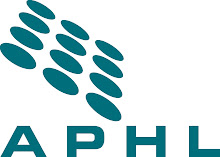APHL has a long history of collaboration with corporations associated with laboratory and public health practice. Corporate partners have sponsored events at our conferences, assisted with training programs for the clinical laboratory community and included us in initiatives to build the under-staffed laboratory workforce. Since APHL established its sustaining membership program in 2005, corporate support for member laboratories has been enthusiastic. We are pleased to have 24 companies as current members.
With the emergence of the novel Influenza A (H1N1) virus, several sustaining members have stepped up to assist member laboratories in ramping up capacity to identify and characterize the virus. One, Applied Biosystems, made contributions long before the virus made its appearance in the United States.
In 2008 Applied Biosystems collaborated with CDC to bring the 7500Fast PCR platform to FDA for clearance with the CDC 5-target influenza assay, which detects circulating strains and the H5N1 virus. Fortunately, APHL had trained public health laboratories on use of the platform and panel prior to the emergence of H1N1, but unfortunately, some did not have the required instruments. Enter Applied Biosystems. The company worked tirelessly to ship and set up equipment 24/7 in labs across the country while providing around the clock technical assistance via phone. To complement this fine work, BioSearch Technologies—whose Black Hole Quencher dye label is used for the probe technology in both the CDC 5-target influenza and novel H1N1 assay—increased production to meet international demands for the test reagents.
Another sustaining member, Luminex, assisted and continues to assist member laboratories that have requested its viral influenza panel and equipment for rule-out of the presence of novel H1N1. Again, the company has worked hard to provide support and technical assistance to aid labs in obtaining equipment and reagents.
Finally, when APHL needed assistance in publicizing the hard work of public health laboratories during this event, we reached out to Fleishman Hillard, a respected national public relations firm with whom we had worked on the Labs Are Vital campaign (www.labsarevital.com). They offered to help us pro bono and have provided insightful advice and much needed support to APHL’s Communications staff.
We are a proud to be a part of this remarkable, extended public health community. The challenges we faced during this outbreak would have been much greater without the support of our corporate partners. We salute you for your efforts and extend our sincere thanks.




